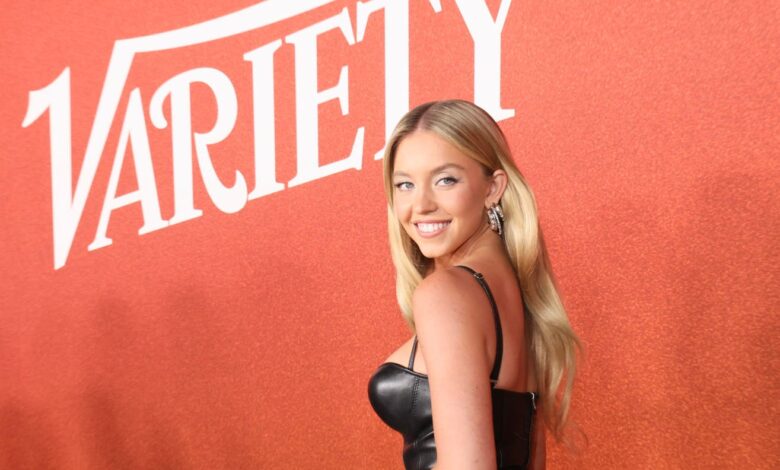The Big Lesson From The Sydney Sweeney American Eagle Backlash

📝 usncan Note: The Big Lesson From The Sydney Sweeney American Eagle Backlash
Disclaimer: This content has been prepared based on currently trending topics to increase your awareness.
Sydney Sweeney and American Eagle backlash.
FilmMagic
The fact that a denim ad is the most controversial moment of the week speaks volumes about the current tensions in society. Unless you’ve been hiding under a rock, you’ll have seen the Sydney Sweeney and American Eagle’s “great jeans” campaign and subsequent backlash. How could a jeans advert warrant such criticism? And what is the bigger lesson brands and agencies can learn from the controversy?
The campaign has been dominating headlines, but it’s important to understand the wider business context. American Eagle has faced a challenging Q1 with weakening business performance due to tariffs, product misses and steep discounting. The brand has withdrawn its guidance for 2025, citing an adjusted operating loss of $68 million. In recent years, American Eagle has collaborated with the likes of Addison Rae, Coco Gauff and Yara Shahidi to win over Gen-Z and unlock new growth. The Sydney Sweeney was an attempt to further boost cultural relevance with Gen-Z. In an interview with WWD, Chief Marketing Officer Craig Brommers said, “I think this is potentially one of the biggest gets in American Eagle history”. The campaign with Sydney Sweeney is reportedly the company’s most expensive campaign to date. It was a big bet from the brand.
However, the “great jeans” advert has received some serious backlash online. Firstly, for promoting sexual imagery while attempting to raise awareness for a domestic violence charity. Commentators were quick to criticize the campaign for appealing to the male gaze. One comment on Instagram reads: “If your goal was to sell women’s jeans to men, great job”. But the main controversy is related to the campaign messaging. On the surface, the adverts seem innocuous. The campaign tagline uses a double entendre, a form of wordplay that combines “jeans” and “genes.” You can imagine the idea being blurted out during a meeting or workshop. But the campaign has been accused and criticized for promoting white supremacy and phrases coded in the language of eugenics. The video features Sweeney saying, “Genes are passed down from parents to offspring, often determining traits like hair color, personality, and even eye color. My genes are blue.” Concluding with the slogan: “Sydney Sweeney has great jeans”. One TikTok commentator wrote: “It’s giving 1930s Germany.”
The main critique centres on the meaning of having “great genes”. Does it suggest the existence of less good or inferior genes? Context is important here. Sydney Sweeney is a white woman with blonde hair and blue eyes. Critics have argued that the campaign reinforces and normalizes the notion that certain genetic attributes are more desirable than others. Eugenics was a central pillar of ideology and policy in Nazi Germany. Separately from this campaign, for the first time in decades, we’re witnessing eugenicist thinking from fringe to mainstream headlines. Serving as the backdrop to the American Eagle campaign. Some view the campaign as symbolic of a cultural and ideological shift back towards whiteness.
Many commentators have suggested that the backlash might have been prevented if more diverse voices were included in the creative process. The problem is that diverse voices don’t always translate to an equal share of influence. Challenging the consensus requires building a culture that welcomes dissent. Besides, a number of TikTok creators have pointed out that the American Eagle Executive team are all white when almost 40% of the U.S. population identifies as people of color. There also appears to be no representation of Millennials or Gen-Z on the leadership team. The very demographics the brand is hoping to connect with.
Others are celebrating the campaign for being “anti-woke”. A return to normality, where brands and celebrities don’t have to be apologetic for existing or being white. Many marketers have argued that people are reading too much into a simple brand advertisement featuring a trending celebrity to sell jeans. The internet and social media have democratized the share of voice. However, more voices create greater levels of scrutiny, resulting in countless critiques and campaign teardowns, oftentimes distant from the original creator’s intentions and ambitions. It feels like marketers and brands are stuck in a lose-lose situation. Brands are bound to be criticized by one group or the other.
Where such an argument falls short is in the real world. Brands are not just logos; they are vehicles for communicating implicit and explicit meaning. Unlike broadcast media and one-way communication models, it’s the audience, not the CMO, who decides how a message is received, remixed and interpreted. Advertising doesn’t exist in a vacuum. Campaigns are created, transmitted and translated within the context of culture. Power has shifted from boardrooms to creators. Under such conditions, it’s mission-critical to understand the cultural backdrop in which your brand is operating. Marketers need both perspective and foresight on how messages will be received in the context of the wider cultural conversation, rather than as a standalone communication.
Advertising is subliminal. Brands appeal to our subconscious emotions, intuitions and sometimes insecurities. The traditional advertising playbook rejects us as we are but embraces us if we buy the brand. Denim brands, like fragrance and luxury care brands, have historically used sexual appeal and aspiration to sell products. However, societal expectations, norms and aspirations have changed since the 20th century. A change yet to be reflected in the marketing and advertising industry. The American Eagle and Sydney Sweeney controversy will eventually blow over, but only to give way to the next consumer backlash. There is a bigger lesson to be learned from the controversy: marketers no longer control the narrative. A brand is no longer what brands tell people, but what people tell brands.




